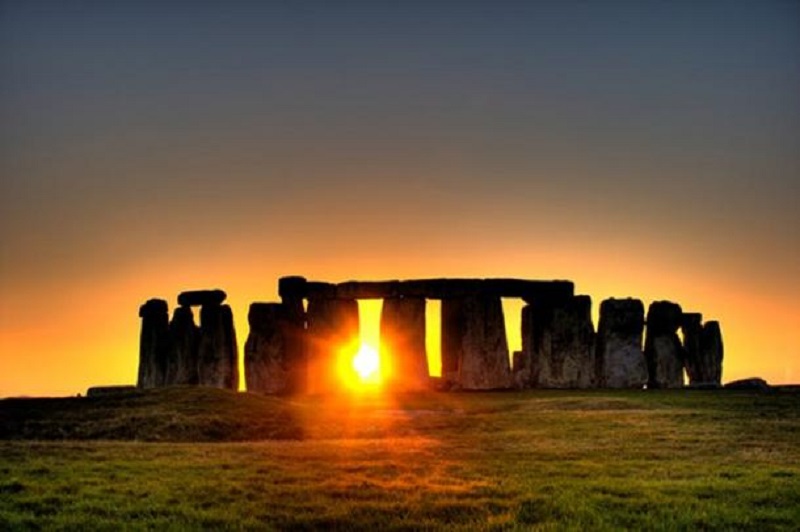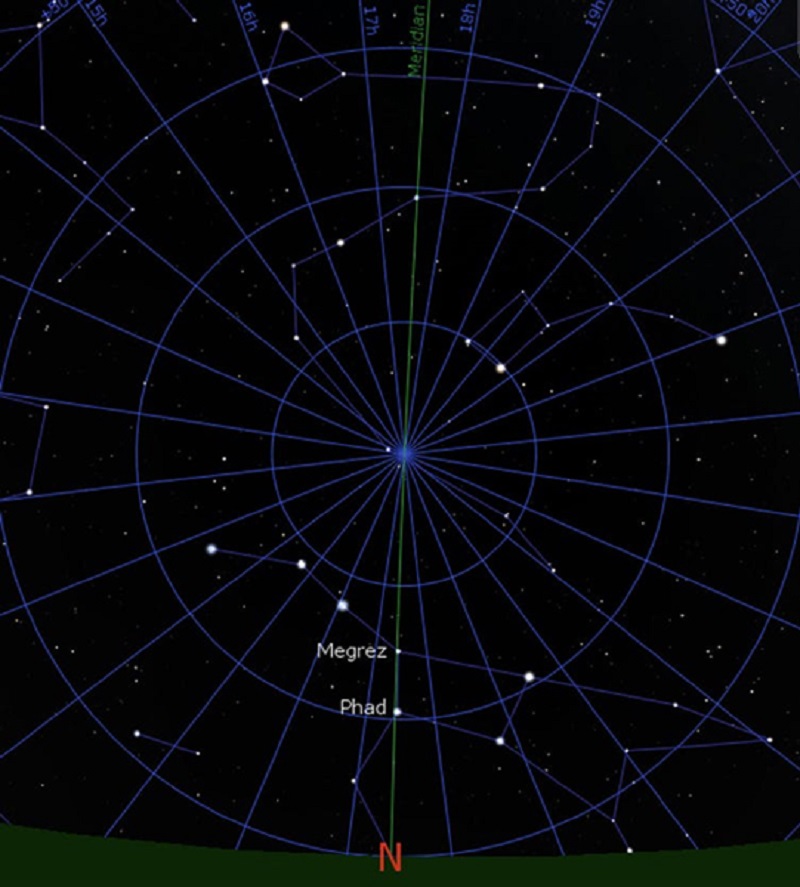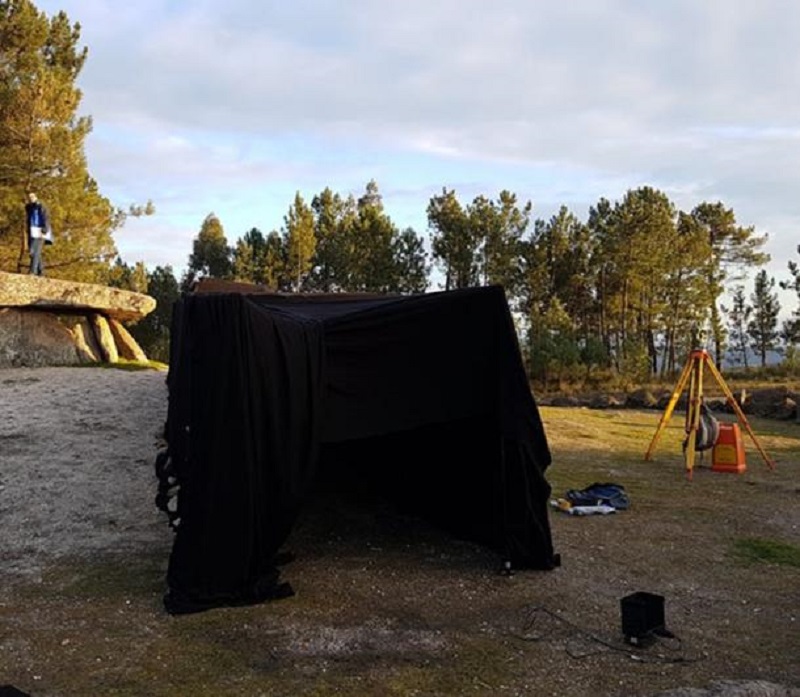Ever since humans have been able to look at the sky, we have been amazed by its beauty and untold mysteries. Naturally, astronomy is often described as the oldest science, inspiring humans for thousands of years. Celestial phenomena are represented in prehistoric cave paintings. And monuments like the Great Pyramid of Giza and Stonehenge appear to be precisely aligned to the cardinal points, or locations where the moon, sun, or stars rise and set above the horizon.
Today, we seem to have difficulty imagining how ancient people could have built and oriented such structures. This has led to many assumptions. Some people argue that prehistoric humans must have had some knowledge of mathematics and science to do this, while others go so far as to speculate that alien visitors showed them how to do it.
But what do we really know about how people in the past understood the sky and developed cosmology? A science called “archaeological astronomy” or “cultural astronomy,” developed in the 1970s, is beginning to provide insights. This subject combines many different areas of expertise, such as astronomy, archaeology, anthropology and ethnoastronomy.
Simple method
The Egyptian pyramids are some of the most impressive ancient monuments and some are oriented with great precision. Egyptologist Flinders Petrie conducted the first highly accurate survey of the Giza pyramid in the 19th century. He discovered that each of the four sides of the pyramid’s base points in the same direction. within about 1/4 degree.
But how did the Egyptians know that? Recently, Glen Dash, an engineer who studies the Giza pyramid, proposed a hypothesis. He relied on the ancient method of the “Indian circle,” which required only a stick and shading string to create the east-west direction. He outlines how this method can be used for pyramids based solely on its simplicity.
So could this happen? It’s not impossible, but at this point we risk falling into a common trap of reflecting our current world views, methods, and ideas on the past. An in-depth understanding of the mythology and related methods known and used at the time would likely yield a more reliable answer.
Stonehenge sun. (Image: simonwakefield CC BY 2.0 )
This is not the first time scientists have drawn conclusions about a scientific method applied in the past. The same thing happened with Stonehenge. In 1964, the late astronomer Gerald Hawkins developed a complex method using craters and markers to predict a solar eclipse at the mysterious monument. However, this does not mean that this is how Stonehenge was intended to be used.
The way forward
To begin to understand the past, we need to bring in a variety of approaches from other disciplines to support an idea. We must also understand that there will never be just one explanation or answer for how a monument might have been arranged or used.
So how can cultural astronomy explain the alignment of the pyramids? A study from 2001 suggested that two stars Megrez and Phad in the constellation known as Ursa Major could be the key. These stars are visible throughout the night. Their lowest position in the sky during a night can be marked north using a merkhet – an ancient time-measuring instrument consisting of a rod with a plumb line attached to a wooden handle to monitor alignment rows of stars.
The advantage of this interpretation is that it links with the stellar mythology drawn from the inscriptions in the temple of Horus at Edfu. These detail the use of the merkhet as a surveying tool – a technique that may also explain the orientation of other sites in Egypt. The inscription includes the hieroglyph “Foreleg of the bull” representing the constellation Big Dipper and its possible location in the sky.
Ursa Major’s use of the stars Megrez and Phad to align with true north (meridian indicated in orange) as simulated for 2562 BC. Daniel Brown
Similarly, better ideas for Stonehenge were also put forward. A study has identified strange wooden circles near the monument and suggests that these circles may represent the living while the stones at Stonehenge represent the dead. Similar practices are seen in relics found in Madagascar, suggesting this may have been a common way prehistoric people thought about the living and the dead. It also offers an exciting new way of understanding Stonehenge in its wider context. Others have interpreted Stonehenge and especially its avenue as marking a ceremonial passage through the underworld with a moonscape on the horizon.
Cultural astronomy has also helped shed light on 6,000-year-old passage tombs – a type of tomb consisting of an interconnected stone chamber and a long narrow entrance – in Portugal. Archaeologist Fabio Silva has shown how the view from inside the tombs frames the horizon where the star Aldebaran rises above a mountain range. This could mean it was built to help the dead or living see the star from the inside, possibly as an initiation ritual.
Field research at one of the tombs in Portugal, Dolmen da Orca. Next to the stone structure is a tent that simulates the view from inside the tomb’s passage. Daniel Brown
But Silva also relies on broader supporting evidence. The framed mountain range was where the tomb builders would migrate with their herds in the summer. The star Aldebaran rises here for the first time of the year – called a spiral rising – during the start of this migration. Interestingly, ancient folklore also tells of a shepherd in this region who discovered a star so bright that it lit up the entire mountain range. Once there, he decided to name the mountain range and his dog after the star – both names still stand today.
Current work I have done in collaboration with Silva also shows that visibility from within the long, narrow entrance to the mausoleum can enhance the star’s visibility by limiting visibility through the aperture. degree.
But while it might be easy to assume that prehistoric humans were analytical astronomers with a deep knowledge of science, it’s important to remember that this only reflects our modern perspective. astronomical. Findings from cultural astronomy show that humans in the past were indeed sky watchers and incorporated what they saw into many aspects of their lives. Although much mystery remains surrounding the meaning and origins of ancient structures, an approach that draws on as many disciplines as possible, including experience and participation in meaning may be our best bet for figuring out their intended use.





